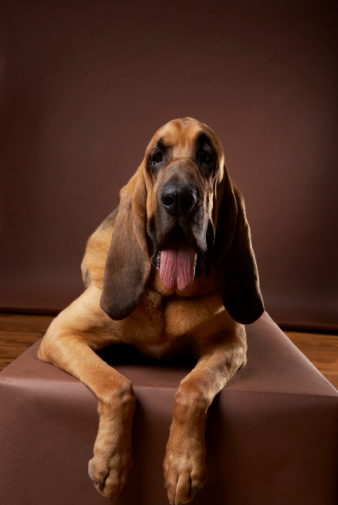Border Terrier
The Border Terrier is also known as: NoneFast Facts
| Group classification: Terrier | Country of origin: Scotland and England | Date of origin: 18th century |
| Weight (M): 13 - 15.5 lb | Height (M): 10 - 11" | Life expectancy: 13 - 15 years |
| Weight (F): 11.5 - 14 lb | Height (F): 10 - 11" |
The Border Terrier is an active dog of long leg and narrow shoulders and body. Its head is often described as otter-like, with a flat and broad skull and small, v-shaped ears that are set well apart. Dark hazel eyes are also set far apart, and are medium in size. Strong, scissors bite teeth are housed in a short, whiskered, darkly colored muzzle. The body is athletically muscular and conveys speed and agility over brute force; shoulders and rib cage are narrow. The tail is fairly short, tapering from base to tip, and is carried gaily. The Border Terrier’s undercoat is dense and short, and is protected by a wiry, rather broken and close lying outer coat. Coloring is red, blue and tan, grizzle and tan, or wheaten.
Border Terrier Temperament
Long bred to work together with other dogs, the Border Terrier is among the more sociable of terriers. This breed does well in the company of strangers, dogs and cats, and is also particularly good with kids. Rodents are another matter, though, so if you have a pet mouse, rat or gerbil, be sure not to let it out of its cage when the dog is around. The Border Terrier is just active enough to keep children entertained and calm enough to not get on the nerves of adults; it really makes a great companion for people of any age. Like pretty much all terriers, the Border Terrier digs, barks and has a “busy” personality. The Border Terrier is affectionate but not particularly demonstrative.
Caring for a Border Terrier
The Border Terrier needs a good bit of exercise every day, preferably in the form of a brisk walk followed by an excursion in a park or field where it can dig and explore. The dog has respectable tolerance for both heat and cold, and can live outside in moderate climates. Coat care consists of biweekly brushing as well as stripping of dead hairs every few months. The Border Terrier typically lives a long life that is virtually free of trips to the vet; some may develop patellar luxation.

























































